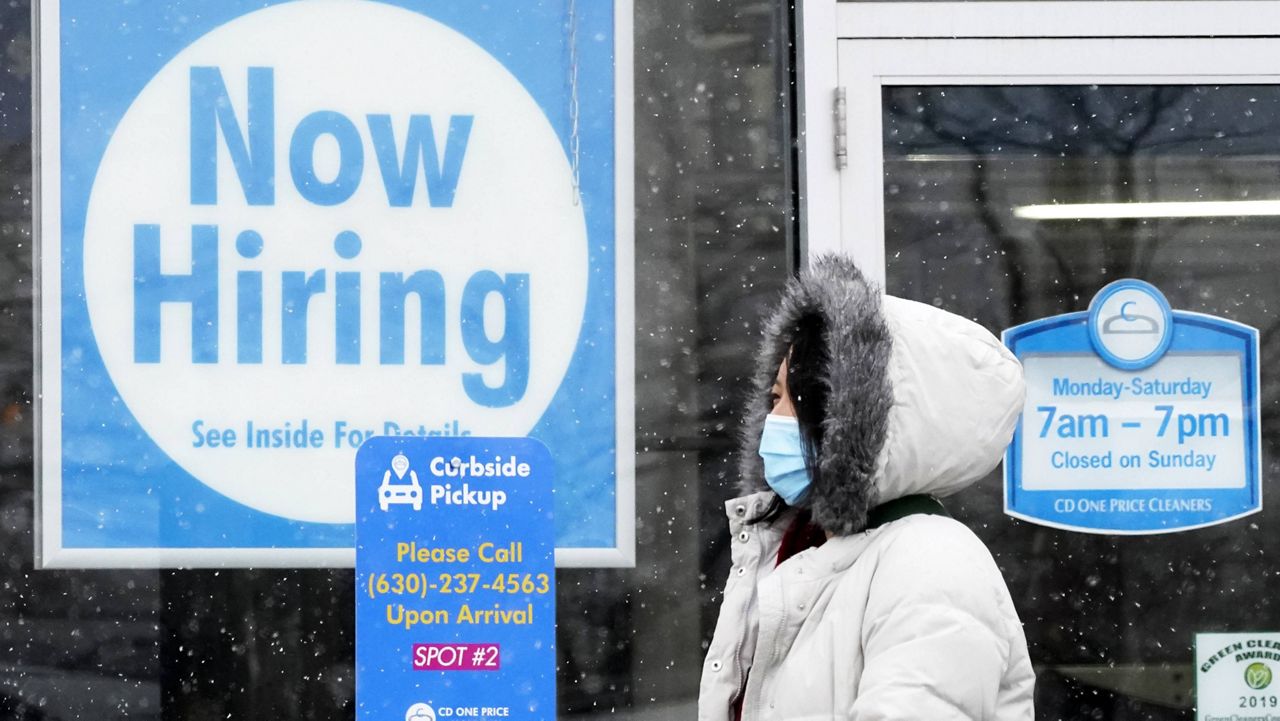New jobless claims fell sharply for the week ending on Feb. 20 to 730,000, plummeting 111,000 from the week prior – the lowest such number since late November, though still historically high compared to pre-pandemic figures.
Jobless claims for the week ending Feb. 13 were 861,000. Prior to the COVID-19 pandemic ravaging the U.S., unemployment benefits never rose higher than 700,000, even during the Great Recession of 2008-09
There are nearly 4.42 million Americans that are collecting unemployment.
The latest figures come as the job market has made scant progress in the past three months. Hiring averaged just 29,000 a month from November through January. Though the unemployment rate was 6.3% in January, a broader measure that includes people who have given up on their job searches is closer to 10%.
All told, 19 million people were receiving unemployment aid as of Feb. 6, up from 18.3 million the previous week. About three-quarters of those recipients are receiving checks from federal benefit programs, including programs that provide jobless aid beyond the 26 weeks given by most states.
Key sectors of the economy, though, are showing signs of picking up as vaccinations increase and government rescue aid works its way through the economy. The Federal Reserve’s ultra-low-rate policy is providing key support, too.
Retail sales soared last month as many Americans spent the $600 checks that were included in a relief package enacted in December. Factory output also rose and has nearly regained its pre-pandemic levels. And sales of newly-built homes soared last month.
The Fed has pegged its short-term interest rate near zero to encourage more borrowing and spending. Chair Jerome Powell stressed in testimony to Congress this week that the Fed plans to keep its rate ultra-low until the job market has recovered – even if inflation has begun to surpass the Fed’s 2% target level by then. That soothed the stock market, which had fallen in the past week on fears that rising interest rates and the threat of inflation might lead the Fed to raise rates too quickly and potentially derail the economy.
The yield on the 10-year Treasury note has risen sharply in anticipation of more robust economic growth and is now near 1.5%. At the start of the year, the 10-year yield was below 1%.
In his testimony this week, Powell downplayed the inflation risk and instead underscored the economy’s struggles, including the 10 million jobs that remain lost since the pandemic erupted nearly a year ago. That’s a deeper job loss than was inflicted by the Great Recession of 2008-2009.
But on Wednesday, Richard Clarida, a Fed vice chair, sounded a more optimistic note in remarks to the U.S. Chamber of Commerce. Clarida pointed to the distribution of vaccines and the economic relief package that the government enacted late last year as reasons for a sunnier outlook.
“The prospects for the economy in 2021 and beyond,” Clarida said, “have brightened, and the downside risk to the outlook has diminished.”
Even the ice storms and widespread power outages in Texas, damaging as they were to residents and businesses there, are unlikely to inflict a major blow on the overall U.S. economy, according to Oxford Economics.
The Associated Press contributed to this report.



